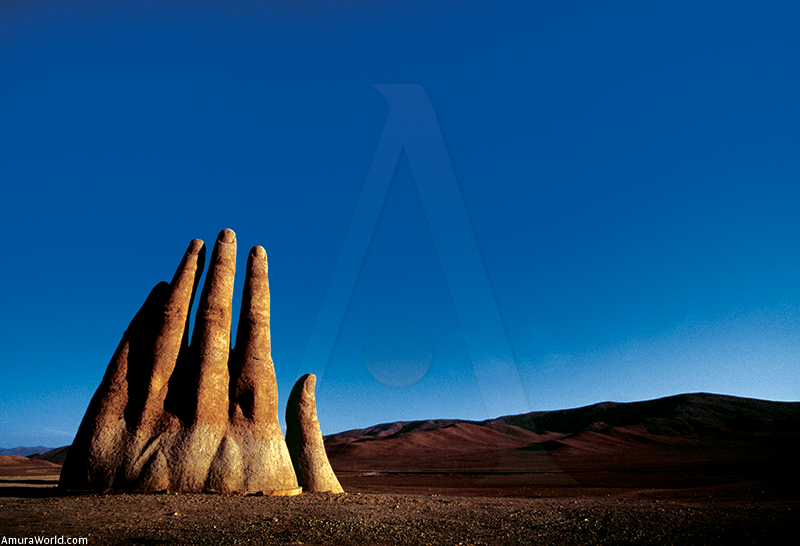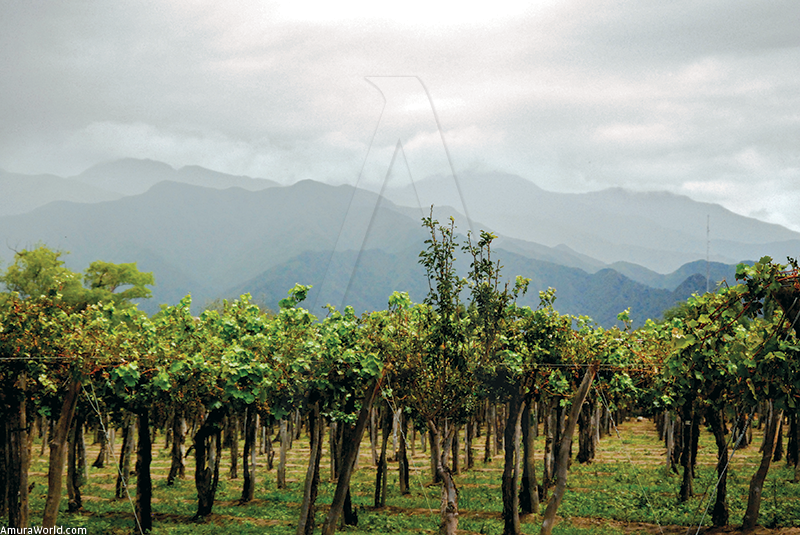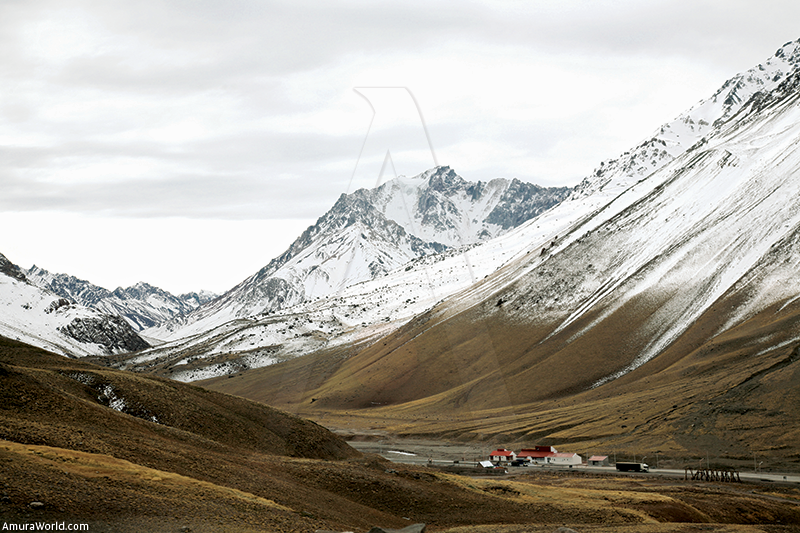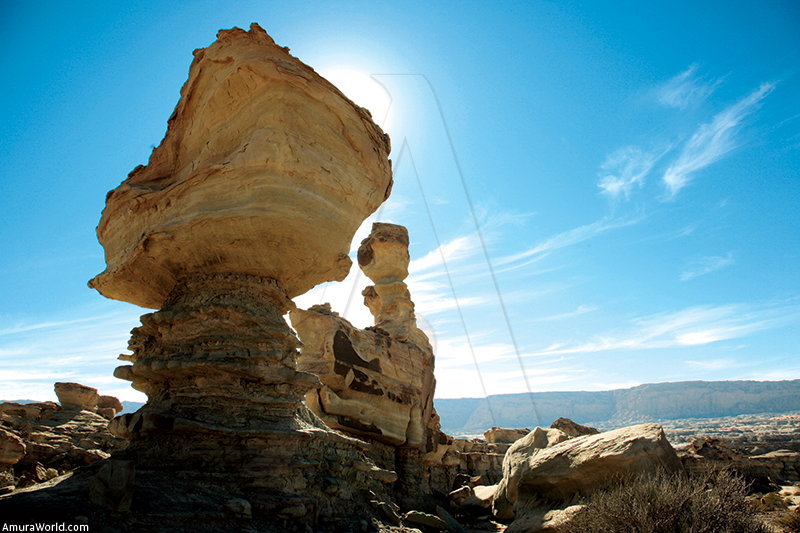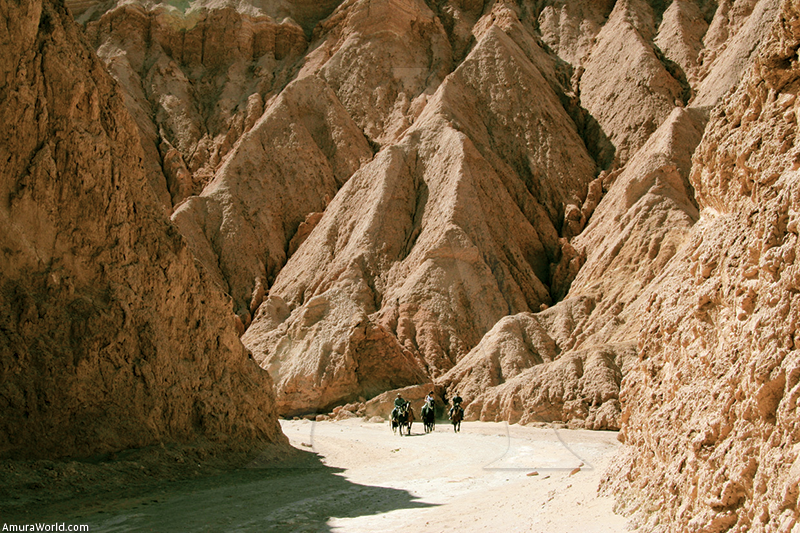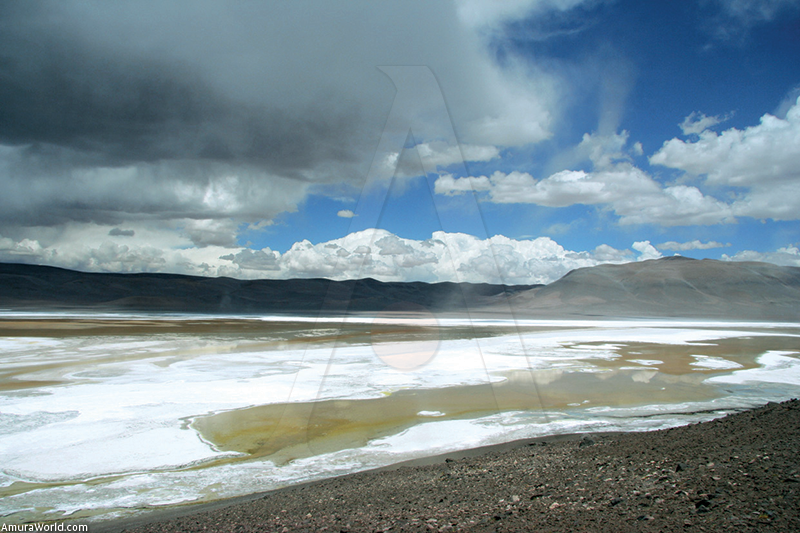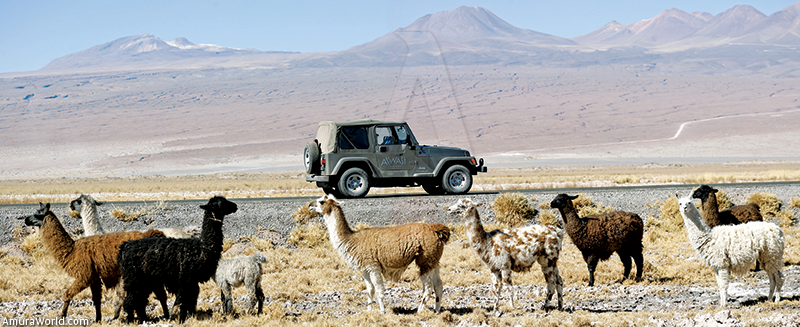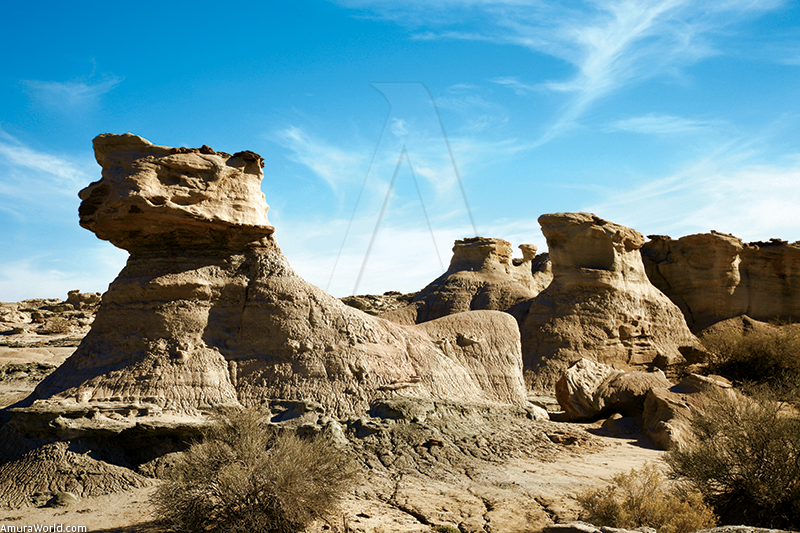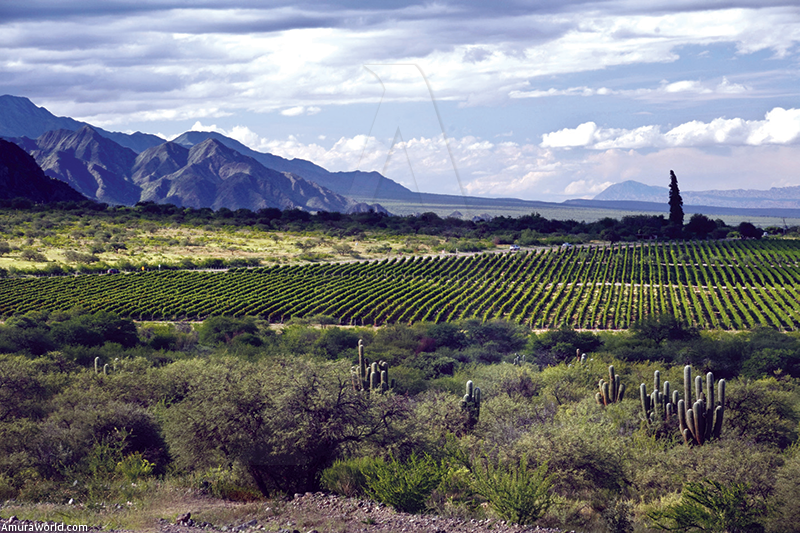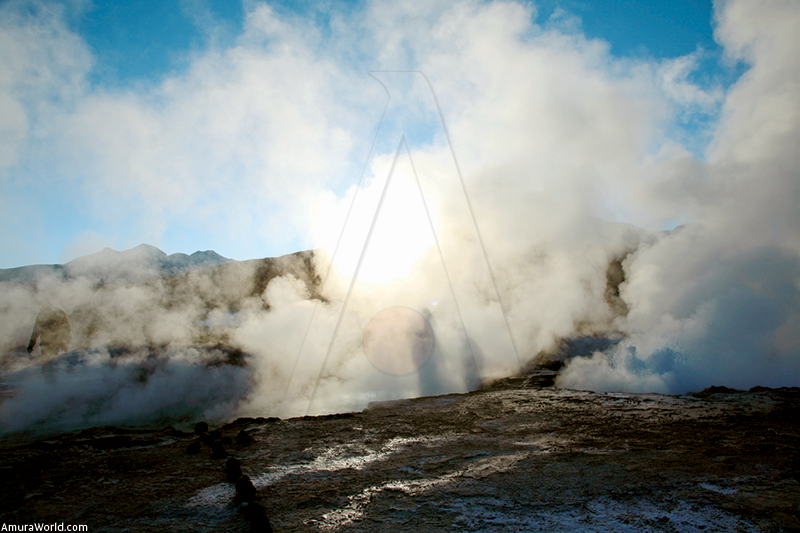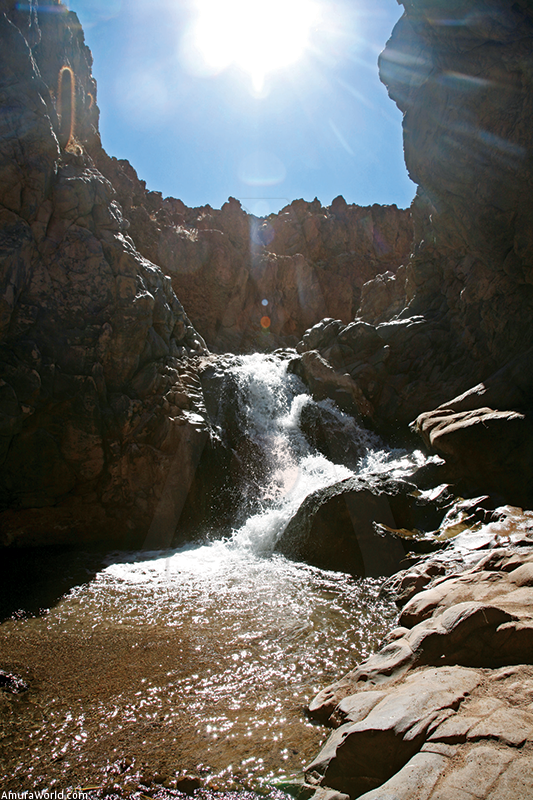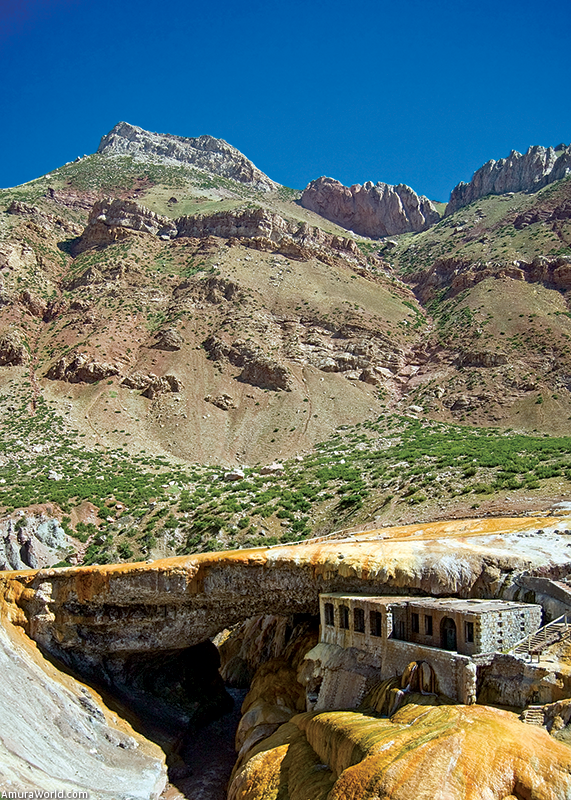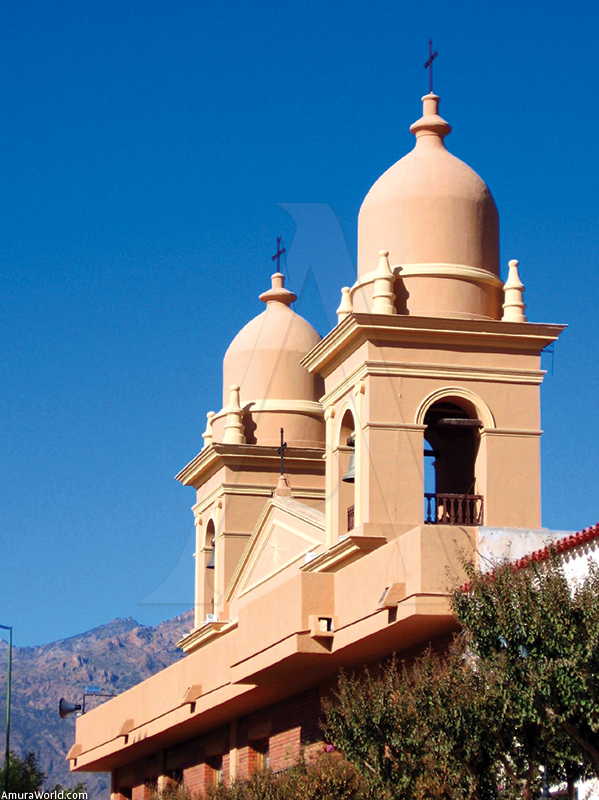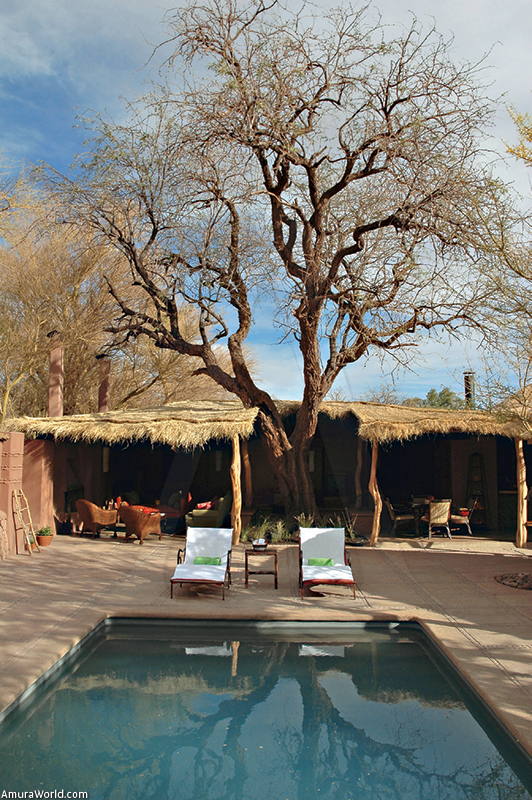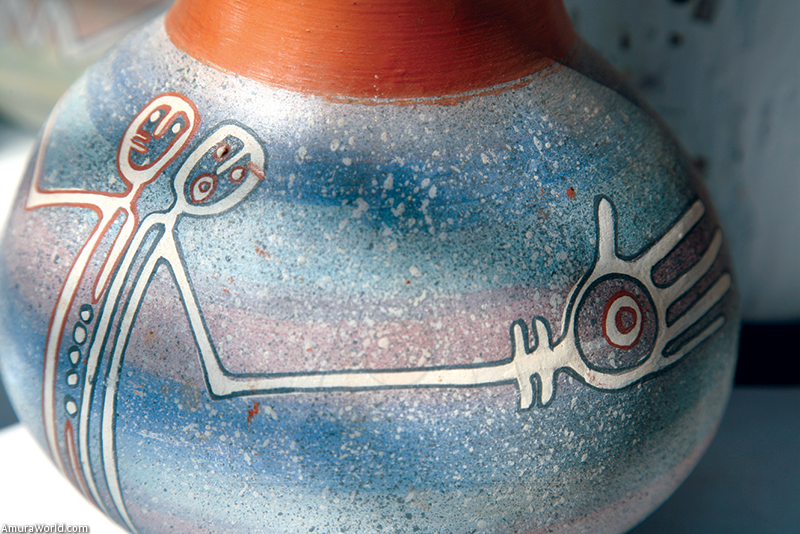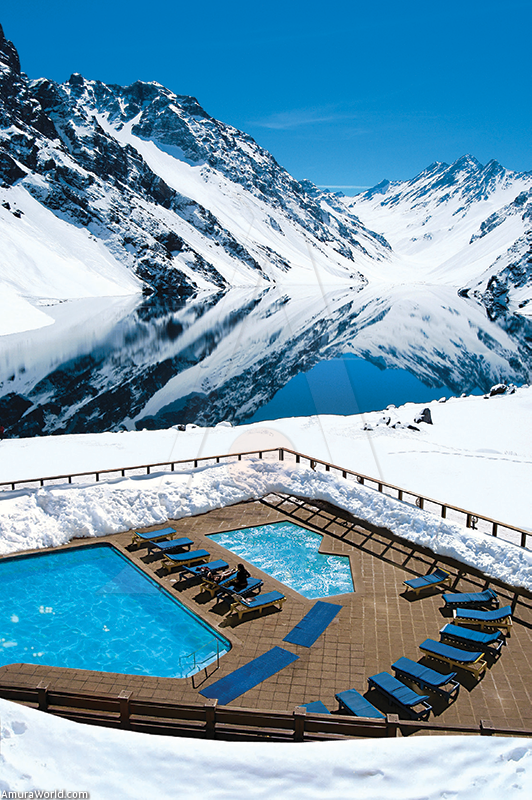{socialbuttons}
If you tell me what the planet is like, there will always remain a question of what´s it like beyond the last hill ¿where does the path lead? , ¿What surprise waits at the next curve?
In this journey, travelling through the coasts of Río de la Plata we have explored the limits of scarcely known lands, where the deserts lay at the foot of the Andes, where the glaciers of the Aconcagua watch the domains of the best Argentinean wines, where the geysers come up to 4 thousand meters of height; the vineyards of Salta light up in green the painted red and ochre deserts.
Land full of surprise, the northeast of Argentina is a treasure that illuminates the magnificence of the Andes.
Mendoza and its Vineyards
Placed at the foot of the snowy Andes, Mendoza is a lovely city, winding among the vineyards that cover the sandy terrains. It is quaint, with good restaurants and hotels. The cellars of the best wines rise with their elegant houses around the city and we visit the Maipú Valley, Godoy Cruz, Luján de Cuyo, San Rafael, to find the best wines of the cellars such as Toro, Santa Ana, López, el Trapiche, Etchart, among others and we discover the Wine Museum, found in the fabulous Casa Giol, of pure Art Nouveau style.
The grills smoulder the air with its exquisite meats, shins and chorizo and the wines paint the glasses to the palate’s delight. Mendoza, accessible from Buenos Aires or Santiago de Chile through the Lan airline.
Aconcagua
Exploring this region of the planet, the paths took us to frozen desserts, mountains close to the sky, lands of dinosaurs and vineyards surrounded by parched areas.
Our first juncture lead us through a beautiful highway up to the Aconcagua, the highest peak in the Andes and of America, with its 6 thousand 962 meters, and the highest in the world, outside of Asia.
We admired the snowy Andes, where we became part of the roads that took us to watch the arid mountains and fertile valleys.
We discovered the “Inca Bridge”, a natural bridge placed at 2 thousand 700 meters of height, where the thermal waters that flow from there have coloured the earth with orange tones, (in 1925 a hotel had been built under the bridge, where people would enjoy the thermal waters, today it is abandoned and a witness of the constant attack of man to the natural landscape), and the ski stations of the Vallecitos, Los Puquíos y Los Penitentes, and the valley that leads to the tunnel that borders Chile.
Finally we reach the National Park, we climb to the Valley of the Horcones, and where the giant that holds many glaciers awes us. It was an amazing and powerful sight; the mountain would crush us with its beauty and magnificence that would reflect in small lagoons. A condor would roam the summits. The snow would embellish the Aconcagua, god of the Andes and home of the mysterious gods. It is one of the most beautiful views in the pla-net, that great hill at the end of the frozen valleys, decorated with eternal ices and tormented by their accident relief.
San Juan and la Difunta Correa
Following the Andes to the north, we cross the farm fields and vineyards to reach the calm and shadowy city of San Juan, with its parks and its province activity.
At 60 kilometres we visit one of the most important sanctuaries in Argentina, where the devout pilgrimage and leave plate of cars, small wood houses and strange thank you offerings.
The legend tells that Deolinda Correa past away here, who in times of the Civil War stirs in 1840, trying to catch up with her husband, died of thirst and hunger under a tree, holding her baby against her chest.
When they found her, the baby was alive and breast feeding from her bosom that kept giving milk. The grave became, slowly, in a sanctuary of devotion and a town has been growing around the chapel and its odd offerings.
Icy Deserts and the Valley of the Moon
The wind would blow on the high plains when we would wander those deserts of arid hills where no one is found, discovering abandoned towns, the villas of a train that no longer comes through, surrounded by the silhouette of the snowed peaks and valleys, where the wind animates the lonely streets of towns like Las Flores, Colola o San José de Jáchal. Beautiful places, isolated and forgotten.
We found a lake of an emerald colour, enclosed by hills painted in reddish, yellow, ochre tones carved by the erosion. We went through some canyons, where the rocks beautify an unusual landscape, which led us to valleys governed by new towns where the souls float in the heavy air, like in Villa Unión, up to San Agustín del Valle Fértil, an oasis in the middle of the desert, with its dusty streets and lake, that refreshes the cactus reflecting in its mirror like water.
The Valley of the Moon is found in the National Park Ischigalasto, where the erosion of the water and the wind has drew a strange relief and we were received at the entrance by a pack of guanacos.
The visit is done by car, with a tour guide that explains the erosion phenomenon which provoked the formation of this rugged sight, where we find formations in the shape of a sphinx, of mushroom and of columns. Some strange arsenic spheres and some sumptuous red-coloured cliffs.
The fame of the park resides in the great quantity of fossils found, that belong to the Triassic Period of the Secondary Era, which began 248 million years ago, distinguished by the expansion of the first dinosaurs and mammals.
We also visited the National Park of Talampaya, with its impressive red canyon, of the La Quijada, we went through La Pampa and the vineyards of La Rioja that encircle the small city of La Rioja, which sleeps under the sun at the foot of the mountain range where a Franciscan XVI century convent is found, considered as the most ancient of Argentina.
We go on to the north of these dry pampas, where the vineyards paint the landscape green up to the San Fernando of the Valley of Catamarca, found in a forest covered ravine. Beyond the mountains, we discover the tropical valley of Tucumán with its sugar cane sown fields, being the smallest province in Argentina reaching to its capital.
From Tucumán to Cafayate
Tucumán is a city that offers a warm welcome, with its majestic plaza and Art Nouveau buildings that challenge time, with its ornamented façades that remind us of the city of Buenos Aires and Paris.
Crossing the sugar cane fields we start to go up the mountainous chain of the Aconquija, that shelters and enthusiastic ravine, till arriving at the high plain of the Tafi Valley where a stream lives, whose waters reflect the clear sky. At its shore, the town of the Tafi Valley warms up beneath the sun, with its mountain like humour, its cheeses and roasted meats, its forgotten air and that receives the people from Tucumán on weekends.
We continue our expedition through the peaks of the Calchaquíes, descending towards the Cafayate Valley. And we run into an arid zone where the Cardoons, those intriguing cactus, defy the crushing sunlight.
We pass the Pachamama Museum, the earth goddess, with its extraordinary sculptures and we arrive at the Quilmes Valley where we discover the fascinating Quilmes Ruins, in a town based on the Tiahuanaco culture that expanded on the tenth century a. C.
When the Spanish arrived, it was an extended city and the Quilmes had to surrender in 1667.
Today, their ruins are a witness of the beauty of this stone town built on a hillside, where they would live in harmony with nature and protect their lamas in corrals.
We then reach the Cafayate Valley until arriving to the flattering vineyards, which grow in the sand of an ancient desert surrounded by purple and ochre coloured mountains. The rooms and cellars defy each other’s beauty, and we get to the Esteco cellar to stay at the “Patios de Cafayate” hotel, which invites us to take a stroll, to enjoy the gardens in the afternoon.
The Spa, let´s relax with the exquisite waters and delightful massages, and at dinner, let´s enjoy one of the elegant inventions of the chef and the wines from the Michel Torino cellar: Altimus, Ciclos, Don David and Elementos.
It was a fabulous stay to switch from the highways, deserts and arid mountains, from the cold to the heat and the bumps on the road to feel like a Prince in this place, in a palace like environment, enjoying the best wines, visiting the cellar and others to taste the best meals.
Towards the North of Cafayate and Salta
In the desert, towards the north of Cafayate, we find exceptional views that combine tormented erosion relieves of the winds and water, leaving naturally carved reddish amazing mountains, others blue or purple with yellow layers, some rivers pass through the valleys and cut the mountains leaving green footsteps behind. At the “La Garganta del Diablo”, (Devil´s throat) we discover this canyon with high walls, red and purple, dominated by the tracks of an ancient giddy waterfall.
Some condors face the blue sky, the hills draw a landscape worth of Dalí. Finally we find fertile plains of the Valleys of Salta, where the gauchos emerge in horses from among the paths and fields.
Salta is a small city with an andino air that reminds us to Peru or Bolivia, with its elegant neighbourhoods and its lively downtown, at one thousand 187 meters of height. Some buildings are from the XVII century like the Cabildo or the San Bernardo convent, but most of them are neoclassic style, like the Cathedral or the San Francisco convent. Of a French style, especially around its central park, where the elegance of the cathedral reins. People relax at the café terraces, stroll around the pedestrian streets or dine at the rhythm of the music.
The Atacama Desert in Chile
Even though it is located very close to Salta, we flew to Santiago with LAN airlines, and from Santiago to Calama, where our tour guide Mario waited for us with the gleaming Jeep.
Finally we arrive at San Pedro de Atacama, where we stayed at the Awasi Hotel, an adobe hotel, in the town´s style.
Considered the most arid desert on the planet, it is found at the Tropic of Capricorn line, placed within the Andes range up to the coast. San Pedro is found at more than 2 thousand meters of height and we discovered some salty lagoons with flamingos.
Our excursions took us to visit Talabre, to walk around a canyon desert at the foot of the volcanoes, with the finest petroglyphs that represent lamas and alpacas, flamingos, pumas and people, that go one thousand 500 years back. Extraordinary as beautiful they are the witnesses of another time, other people, a history that has remained forgotten.
We continue our journey till we get to the Chaxa Lagoon and Barros Negros, where we find these small salty lagoons in which a great flamingo colony, that encloses 3 different species, has been feeding with the water shrimps. A great variety of birds surround them. It was a gorgeous expectable to find these flamingos in the middle of the desert.
We got to the small town of Socaire, with its rustic church we follow the land road to discover the amazing landscape of the Salar de Talar and the Incahuasi lagoons, shaken by the icy winds, surrounded by the ochre, purple and grey tone mountains. The salty and frozen lagoons have an emerald turquoise tones, place at more than 4 thousand meters of height. In our return, we stopped to admire the blue Miscanti and Callejón Varela lagoons, filled with ducks and flamingos.
Al siguiente día, salimos a las 5 a.m., para llegar a la zona de los géiseres del Tatio, a 4 mil 300 m de altura, situados en un paisaje lunar. El vapor surge de la tierra, la cual escupe agua hirviendo, los minerales dibujan unas formas sorprendentes; el frío es intenso.
The next day, we went out at 5 a.m., to arrive to the geyser zone of Tatio, at 4 thousand and 300 meters of height, placed in a moonish landscape. The steam appears from the earth, which spits boiling water, the minerals draw outstanding shapes; the cold is intense.
When the sun comes up to light up the hills, its orange color encloses the steam columns, the people´s silouhetes appear to be dancing within that exhalation. The small valley spits the smoke of the underground rivers that are found in the magma.
Coming down toward San Pedro, we find alpacas, ducks, the small town of Machuca and we walk through a canyon where a torrent runs, long cactus in twisted shapes grow and we end up visiting newer petroglyphes.
The last day we went on a bicycle ride through the Pukara de Quitor Valley, whose ruins watch the ravine entrance, witnesses of the past Tiahuanaco and inca, before the spanish arrived. Within this spectacular landscape of reddish mountains carved by the erosion, we follow the rived, cross it barefoot, till we get to the town´s church, isolated in the middle of the valley.
In the aftertoon we visit the Tebinquinche lagoons where the great concentration of salt allows to float effortlessly and people enjoy it, finding warmer waters in some parts thanks to deep spring waters.
We end our journey around the Valley of the Moon, with its strange rocky formation zones, sand dunes and salty parts and we enjoy of the incredible sunset, watching the Valley of Death and its eroded mountains, when the sun painted the clouds of pink, purple and blue.
Atacama is an extremaly unusual place, where the cold of the night freezes the bones, that want to run the roads when the sun warms up the atmosphere, lighting the transparent sky.
Our tour ends here and the plane of Lan airlines transported us to Río de la Plata to continue our route… We had known the most intriguing deserts of South America, at the foot of the Andes, observed by the Aconcagua, and embellished by the vineyards or salty lagoons, carved by the millenary erosion that is home to the most ancient dinosaurs.
It was a fabulous experience, outstanding, very different to what we had known of Argentina and Chile, with the glaciers and green bushy valleys. It´s another view of a continent that never stops surprising us.
Portillo Ski, the spirit of the Andes
Located on the Andes, two hours away from Santiago. Portillo is the most ancient ski station in South America and is still the best, competing with Bariloche.
This winter station in the region of Valparaiso opened its door almost half a century ago. one of the most important complexes in Chile and until today is in the hands of the United States.
It is a true legend for the Andes fanatics: it unites adventures, challenges, excellent ski tracks and superb facilities. People started skiing when the railroad uniting Valparaiso and Mendoza first started its construction, and in 1930 the bases of this station where developed, surrounding the Inca lagoon.
Portillo is the queen for the best ski and snowboard tracks, but also for any other kind of sport and every year its competitions are long awaited like the 'Sol de Portillo*. The biggest track is two miles long.
This station offers 80% of sunny days in a superb landscape. The highest altitude is over 4 thousand meters and one of its greatest advantages is that it lets you enjoy skiing during the North America's summer.
A wonderful choice to spend the summer and to enjoy the near excursion trips like the Atacama Dessert or the wine region in Argentina.
Portillo is a paradise that each and every ski lover and athlete have to discover and will fall in love forever, ready to repeat this summer experience. where the snow is guaranteed and with the best quality.
Also, it is today's training destination for numerous Olympic and professional athletes for the descent discipline. Portillo opens its doors from June 11th and has an approximate closing time around October 8th. August is ideal for ski addicts. Winter and Spring are mixed together in September, offering a great weather and the best snow quality.
Info
Portillo Ski Center
Renato Sánchez 4270
Las Condes, Santiago, Chile
T: (56-2) 361 7000
F: (56-2) 361 7080
www.skiportillo.com
This email address is being protected from spambots. You need JavaScript enabled to view it.
Text: Patrick Monney ± Photo: Cortesía Getty Images, Patrick Monney, Hotel Awasi y Flickr

